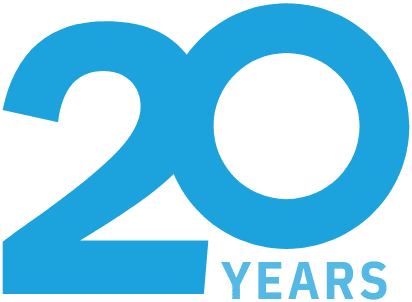Every document your business creates — whether it’s a printed invoice, a contract, or a handwritten note — has a lifecycle. And managing that lifecycle properly isn’t just good housekeeping; it’s a crucial part of protecting your business from data breaches, ensuring compliance, and improving efficiency.
From the moment a document is created to the moment it’s securely destroyed, there are several important stages it moves through.Let’s walk through each step — highlighting physical documents, which can be easily overlooked but still present security and compliance risks.
1. Document Creation: Putting Information on Paper (or Screen)
Documents are created daily in business operations — both digitally and physically — and they come in many forms, from customer contracts and employee records to invoices, meeting notes, and printed emails. Whether generated by a printer, handwritten on a notepad, or saved to a cloud drive, every document represents a piece of business-critical information. Each one, no matter how minor it may seem, enters the organization’s workflow and must be properly managed from day one to ensure security, accessibility, and compliance.
Common examples of documents that require careful handling include:
- Invoices and billing records
- Contracts and agreements
- HR files and personnel records
- Customer files and service logs
- Compliance and audit documents
While digital documents offer convenience and scalability, printed documents are often necessary. Whether it’s for signatures, review meetings, or physical distribution, the paper trail still plays a major role in everyday business.
⚠️ Security tip: Even a single printed email or document draft becomes a liability if left unsecured. From the moment it’s created, it needs to be tracked and managed with the same care as more formal paperwork.
2. Active Use: When Documents Are Still in Motion
Once created, documents enter a phase of active use — a period where they’re frequently referenced, edited, reviewed, or shared among team members. This is often the busiest stage in a document’s lifecycle, as it supports day-to-day operations like onboarding new employees, managing client accounts, or completing financial transactions. During this time, documents may be stored temporarily on desks, emailed between colleagues, printed for meetings, or transported between departments.
Because these documents are in motion and not yet archived, they’re more vulnerable to being misplaced, viewed by unauthorized individuals, or accidentally discarded. Establishing clear handling procedures during this stage is critical to maintaining document integrity and protecting sensitive information.
Examples of storage and usage during this phase: 
- A signed contract left on a desk
- Client intake forms stored in an unlocked drawer
- Printed emails passed around in meetings
- Sticky notes with sensitive info stuck to monitors
This is one of the riskiest phases for physical documents because they’re often handled informally. Unlike digital files with access restrictions and backups, a piece of paper can go missing or be read by anyone who walks by.
Simple safeguards can include:
- Lockable desk drawers
- A clean-desk policy at the end of each day
- Clearly marked folders for client or HR files
- Never printing documents unless necessary
3. Retention and Archiving: When the Clock Starts Ticking
After a document has served its immediate purpose, it doesn’t just disappear — especially if it holds legal, operational, financial, or compliance value. At this stage, it should transition from daily use to long-term storage. Archiving documents is a critical step in the lifecycle because it ensures that important records are preserved for reference, audits, litigation, or regulatory review. Proper archiving helps reduce office clutter, protects against accidental loss, and supports your organization’s ability to retrieve key information quickly when needed. But to be effective, this phase requires a secure, well-organized system — especially for physical files that can be easily lost or damaged if not stored correctly.
Common retention periods include:
| Document Type | Typical Retention Period |
|---|---|
| Employee records | 7+ years post-employment |
| Tax documents | 6–7 years |
| Client contracts | Duration of contract + 2 years |
| Medical/health records | 10+ years (varies by province) |
| Insurance policies | Life of policy + several years after |
At this stage, it’s essential to move physical documents out of the office and into a secure storage facility. DIY storage solutions (like basement filing cabinets) are often not temperature controlled, insured, or compliant.
Blue-Pencil’s document storage service offers barcode indexing, fast retrieval, and high-security access control — so you know exactly where everything is and who’s touched it.
4. Scanning and Digitization (Optional But Recommended):
Digitizing your paper files offers more than just convenience — it adds a critical layer of backup, accessibility, and long-term efficiency. By converting hard copy records into digital formats, your organization can reduce reliance on physical storage, speed up document retrieval, and improve overall collaboration across departments. Digital files can be indexed, searched, and shared with ease — reducing the time employees spend hunting for paper documents or waiting for files to be pulled from storage.
Digitization also supports your disaster recovery strategy. In the event of a fire, flood, or theft, having key documents backed up in a secure digital environment ensures your business can continue operating without major disruption. And from a compliance perspective, digital archives can streamline audits and reporting, as records can be accessed instantly and tracked electronically.
 Key benefits of digitizing documents include:
Key benefits of digitizing documents include:
- Staff can search and retrieve files quickly
- Documents can be shared securely
- Fire, flood, or theft risks are reduced
- You can free up valuable office real estate
While not all documents need to be scanned, digitization is especially valuable for:
- Frequently accessed records
- Legal and compliance documents
- Client onboarding or intake forms
- HR and payroll files
Blue-Pencil’s scanning service ensures sensitive data never leaves the chain of custody — and we can coordinate secure shredding or storage of the original documents once digitized.
5. Review and Inactivity: Time to Decide What Stays
Files shouldn’t sit untouched forever — even if they’re stored securely. Over time, outdated or unnecessary documents can accumulate, taking up space, increasing liability, and making it harder to find what you actually need. That’s why every organization should implement a structured review process to regularly evaluate both physical and digital records.
An annual or bi-annual review provides a valuable opportunity to clean up archives, confirm compliance with retention schedules, and reduce unnecessary storage costs. It also minimizes the risk of holding onto sensitive information longer than necessary — which can increase your exposure during a data breach or legal discovery.
During these reviews, departments should assess the purpose, value, and legal retention period for each category of document. From there, it becomes easier to determine whether each file:
- Needs to be retained longer
- Can be digitized and archived
- Should be securely destroyed
Holding onto old documents “just in case” increases liability. It’s not just about space — it’s about exposure to risk.
Signs your document management process needs review:
- Overflowing filing cabinets
- Employees unsure what to do with old files
- Delays finding client or regulatory documents
- Increased shredding costs from large purge jobs
Setting a consistent document review cadence — aligned with your retention schedule — can eliminate guesswork and reduce risks.
6. Secure Destruction: The Only Way to End the Lifecycle
Documents that have fulfilled their purpose or reached the end of their retention period must be securely shredded — no exceptions. At this point in the lifecycle, these files no longer serve an operational or legal function, but they still contain sensitive or confidential information that could pose a risk if exposed. Simply tossing paper into the recycling bin, or even a standard garbage can, leaves your organization open to data breaches, identity theft, or regulatory non-compliance.
Whether it’s customer information, employee records, financial data, or internal memos, every piece of paper needs to be treated as a potential liability once it’s no longer needed. Secure shredding ensures that documents are rendered completely unreadable and unrecoverable — and when handled by a trusted shredding provider, it also creates a verifiable chain of custody and certificate of destruction for your records.
This final stage isn’t just about cleanup — it’s about closing the loop on your document lifecycle in a way that protects your business, your clients, and your reputation.
Why professional shredding matters:
- Ensures compliance with laws like PIPEDA and PHIPA
- Reduces risk of identity theft and data breaches
- Destroys all information beyond recovery
- Provides a documented certificate of destruction
Not just for cleanouts: Shredding isn’t only for big annual purges. Even temporary, one-time-use documents — like printed meeting notes or internal memos — can contain confidential info.These should be placed directly into your office shred bin for regular pickup. If it’s paper and it’s no longer needed, it should be shredded — no exceptions.
7. Ongoing Document Disposal: Why Regular Shredding is Key
Ad hoc shredding doesn’t cut it — and relying on staff to remember to use a standalone shredder or periodically “clean out” documents creates gaps in security. A consistent, scheduled shredding program with locked shred bins placed throughout the office ensures that sensitive paperwork is safely disposed of the moment it’s no longer needed.
Regular pickups — whether weekly, bi-weekly, or monthly — eliminate the risk of papers piling up or sitting unattended for too long. They also reduce the burden on employees, remove guesswork about what to shred, and reinforce good data protection habits across your organization.
Just as you wouldn’t leave digital files unprotected, physical documents deserve the same ongoing security. A shred-all bin system, supported by a trusted shredding provider, helps close the loop — turning daily document disposal into a seamless part of your workflow.
Best practices for everyday shredding:
- Place locked shred bins in multiple office areas
- Choose weekly or bi-weekly pickups depending on volume
- Ensure bins are serviced by vetted professionals
- Communicate clearly that all unneeded paper goes in — not just “important” documents
Implementing a “Shred-All” policy simplifies decision-making for staff. No more wondering if a page is confidential — assume it is and shred it.
Bonus: Don’t Forget Hard Drives and Digital Media
Paper isn’t the only thing that needs destroying. Today’s businesses rely heavily on digital devices — and those devices hold far more information than most people realize. Old laptops, USB drives, external hard drives, mobile phones, and backup tapes can contain thousands of sensitive files, including customer data, financial records, employee details, emails, and internal reports. Even if you’ve deleted the files or wiped the drive using software, the data can often still be recovered by someone with the right tools.
That’s why physical destruction is the only truly secure method for disposing of end-of-life media and IT equipment. Simply donating, reselling, or tossing outdated hardware into the e-waste bin could expose your business to serious data breaches and regulatory penalties.
Blue-Pencil’s media and hard drive destruction service uses industrial-grade shredders designed to destroy storage devices beyond repair — rendering all data completely irretrievable. We provide full chain-of-custody documentation and a certificate of destruction, giving you peace of mind that your digital information has been properly and permanently erased.
Whether you’re upgrading equipment, downsizing, or cleaning out legacy storage, secure media destruction should be part of your broader information security strategy.
Don’t Leave Your Document Lifecycle to Chance
Managing documents effectively means thinking about the entire journey — from the moment they’re created to the moment they’re securely destroyed. Each stage plays a vital role in keeping your business organized, compliant, and protected.
Here’s a quick recap of the key phases in the document lifecycle and what each one requires:
| Stage | Key Action |
|---|---|
| Creation | Use secure practices from the beginning |
| Active Use | Store safely and control who can access |
| Retention | Archive offsite with tracking and retention rules |
| Digitization | Create backups and streamline document access |
| Review | Evaluate what to keep, digitize, or destroy |
| Destruction | Use professional shredding for all unneeded files |
| Training | Empower your staff to follow the process daily |
From day one to the final shred, managing your documents properly protects your business — and your reputation.
Ready to Take Control of Your Documents?
Blue-Pencil helps Canadian businesses manage documents at every stage of the lifecycle — from secure offsite storage and scanning to shredding and media destruction.
Book a free consultation today to set up a shredding program or streamline your retention process.



